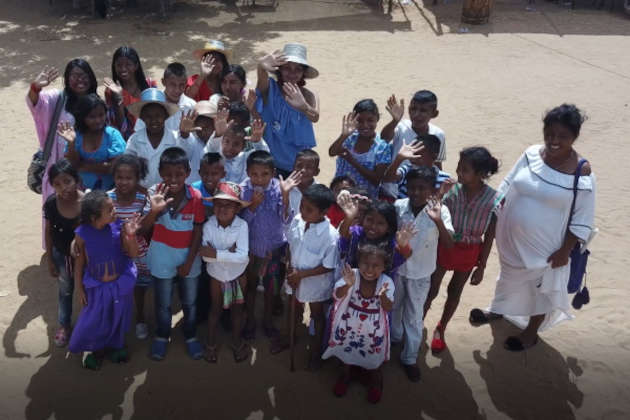
Contents
A JSOM Alumni Story
What is MIS?
MIS stands for management information systems and is one of several programs at The Jindal School. Our MIS program names may give you a better idea of what you will learn in this blog. At the undergraduate level, our MIS degree is ITS, Information Technology and Systems. And at the graduate level, our MIS degree is MS ITM, Master of Science Information Technology and Management.
Professor Gaurav Shekar, senior lecturer in the information systems area, stated in his MIS blog article: “All of us users of technology are information systems managers on a micro-scale. Do you use a cellphone or a computer to receive, send, organize and manage your data? If you do, you now have some experience handling the user interface of information technology – IT. It doesn’t take a programmer or technology expert to grasp the ideas behind MIS and thrive in this career.”
What can MIS graduates do?
I recently met alumnus Brandon Miller, a BS MIS graduate. He finished the program in 2014, right before the degree switched names to BS ITS. For Miller, MIS gave him the best of the technology world and the business world; teaching him to find technology solutions to optimize business processes.
While Miller explored the different paths an MIS professional can take, he found MIS has ample professional options. Here is the list I compiled from various sites:
- Data Analyst
- Business Analyst
- Data Engineer
- Business Intelligence
- Data Scientist
- Information Technology Architect
- Information Systems (IS) Manager
- IT Project Manager
- Computer Systems Analyst
- Computer Systems Administrator
- Information Security Manager
- Database Administrator
- Information Security Analyst
- App Developer
- Librarian
- IT Manager
- Search Marketing Strategist
- Software Engineer
- Web Developer
- Web Manager
- E-commerce Developer
- Systems Analyst
- Database Manager
- Network Administrator
- Project Lead
- Information Technology Consultant
As you can see, MIS graduates have many different paths they can take in their careers. Even though this gives students tons of flexibility, it can also cause a little uncertainty. This was the case for Miller. He said he felt grateful, but a bit overwhelmed with all the options. He jumped into various jobs that taught him about corporate processes but did not completely fulfill his expectations. Then, he started thinking further.
Why MIS is a Good Major to Choose
First, you already read above how many different paths you could take with an MIS degree. But don’t limit yourself to my list; there are others I did not include. Second, the U.S. Bureau of Labor Statistics reports that MIS degrees’ job outlook is growing at 10 percent, much faster than the average eight percent. Businesses everywhere and of any size need information technology systems. Even more so, after the pandemic, thousands have had to move operations online and need more assistance than in the past.
The job demand was not different back in 2016, but Miller had other plans. Seeing how easily he could apply MIS knowledge to any business, he decided to invest in himself and start his own. Little did he know, this business would later positively impact thousands of people living in poverty.
Using MIS for Good: The Birth of Wayuu Market

The Wayuu are the largest indigenous rural community in Colombia and Venezuela. Miller found out about the Wayuu Artisan Handmade Production in Colombia. The tribesmen are generational crochet weavers that produce millions of handmade items every year. Miller realized there was an excellent opportunity to help people join the world economy through technology.
Seeing firsthand the unfair treatment of indigenous women weavers by merchants, Miller wanted to create a way for the families to sell their products in a fair trade market.
He thought about e-commerce platforms that were already working here in the U.S. He studied the processes that could help optimize the flow. He even reached back out to one of his favorite professors, JSOM’s Information Technology Professor Harpreet Singh to help with search engine optimization. Soon enough, Wayuu Market became a tangible project.
Miller designed an online platform and a logistics center based on e-bay, Amazon, and Amazon Fulfillment Center. After a few months, Miller and Diana Miller founded WayuuMarket.com, and as soon as they opened, they started receiving artisans willing to try the services. This non-profit organization allows people worldwide to connect with the Wayuu culture and support their craft of Colombian-woven bags and more. All at no cost to the artists.
Last year, FAO, Food and Agriculture Organization of the United Nations, noticed this organization and decided to help. Wayuu Market counts on local and international institutions like the UN to continue their operation. Furthermore, this market has become critical during the COVID-19 Pandemic since touring has nearly stopped entirely. The platform became the best resource for indigenous people to sell their bags through these difficult times.
How Does MIS Help Bridge the Poverty Gap?

As of today, Wayuu Market helps thousands of women sell products online. The market also has about 80 stores, each representative of a weaving community. The headquarters at Wayuu Market has an organized inventory system to keep track of each sale, stock, and store where each bag belongs.
An MIS Degree from the Jindal School gave Miller the tools to create a system that would help bridge the poverty gap in the rural Wayuu communities. Wayuu Market allows artisans to be autonomous sellers. They used to depend on merchants to help them sell, but now the platform enables them to take charge of their commerce. It is a one-stop-shop where the weavers receive assistance with all the commercialization aspects, including:
- Product Storage
- Inventory Management
- Pricing
- Branding and Graphic Design
- Commercialization
- Logistics and Shipping
- Customer Service
Brandon Miller is an excellent example of how students at JSOM use their knowledge to give back. UT Dallas is the proud home of various alumni with similar stories that started at the Jindal School. Also, caring professors like Dr. Singh are prominent among faculty. The support from professors and the University as a whole goes beyond graduation.
So, Where Do MIS Graduates Work?
The answer is simple, and I believe you already know it: almost anywhere – corporations, small businesses, non-profits, the government and public institutions, and more.
What’s your JSOM alumni story? Leave a comment below or submit your blog idea with the button at the top of the page.





